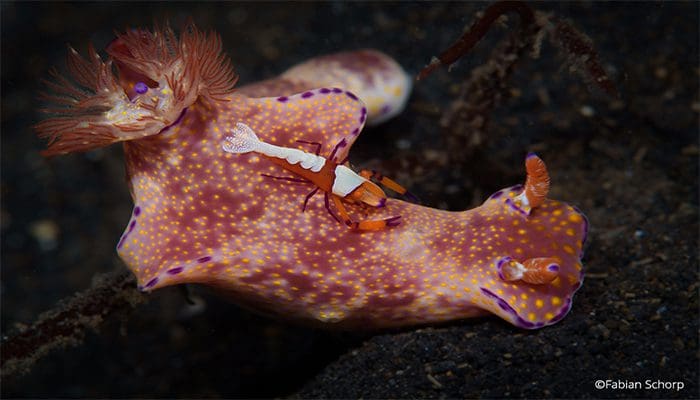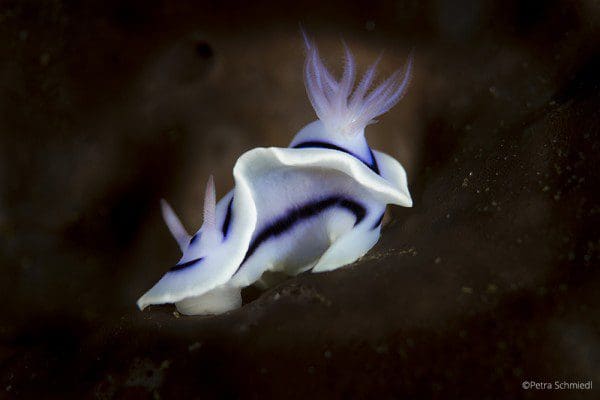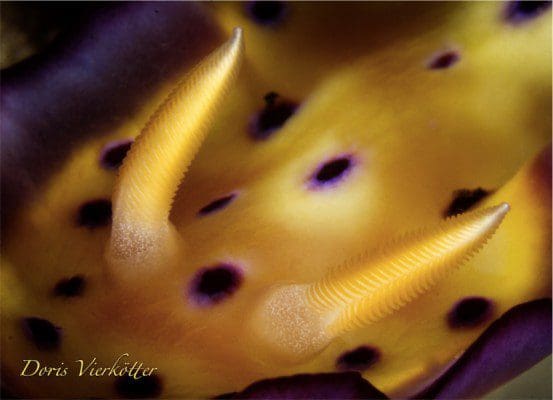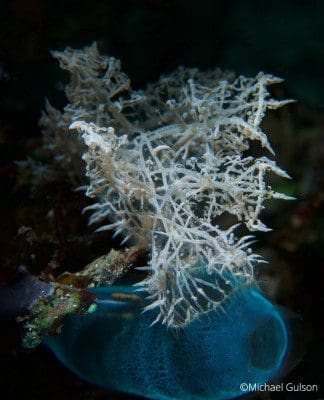
Nudibranch in Lembeh, North Sulawesi – Indonesia
Why Do Divers Love Nudibranch?
There are many reasons why divers love nudibranch; they are found the world over, they are rewarding to find, they are one of the most varied species of marine life on the planet, they are excellent photography subjects AND they are somehow still a little bit mysterious. Do you really know your nudibranch? Here are 8 fun facts to fill you in!
- There are over 3,000 species of nudibranch so it’s not surprising that it’s difficult to learn the names of all of them. They are found in all of the world’s oceans (warm water and cold water). Nudibranch range in size from just a few millimetres to over 12 inches long. Their colours vary from dull browns and blacks to all number of fluorescent shades and psychedelic patterns. In the Lembeh Strait we have nudibranch from each end of the spectrum from tiny, colourful gems to larger species with elaborate features.
- They might be bright but they don’t know it! Nudibranch can only see in shades of light and dark but not in colour. Instead of relying on their limited vision they detect the world through their rhinophores (the two horn-like appendages on their heads).
 3. To simplify things, there are two main types of nudibranch – dorid and aeolid. Dorid nudibranch have two rhinophores plus a feathery looking set of gills on their backs (yes, those are gills!). Aeolid nudibranch also have rhinophores but their backs are covered with “cerata” finger like strands which are multi-functional, allowing the nudibranch to breath, digest and even defend itself. Our guides at Critters@Lembeh are pros when it comes to identification and will record your species sightings for you.
3. To simplify things, there are two main types of nudibranch – dorid and aeolid. Dorid nudibranch have two rhinophores plus a feathery looking set of gills on their backs (yes, those are gills!). Aeolid nudibranch also have rhinophores but their backs are covered with “cerata” finger like strands which are multi-functional, allowing the nudibranch to breath, digest and even defend itself. Our guides at Critters@Lembeh are pros when it comes to identification and will record your species sightings for you.
- Each nudibranch is male AND female! Nudibranch are hermaphrodites which means they have both male and female sex organs. Because some species are solitary in nature and because they do not move so fast they need to be able to reproduce whenever the opportunity presents itself.
- Nudibranch may be slow but they don’t hang around – most nudibranch only live for up to a maximum of one year, some only live for a few weeks. There are a few exceptions however that can have life spans of up to 3 years.
- Nudibranch can pack a punch – Aeolid nudibranch can store poison, which they obtain when eating their prey (such as crown of thorns and even Portuguese man of war), in their cerata which makes then highly toxic to marine predators. The good news is that they are harmless to humans.
- Nudibranch can be solar powered! Some aeolid nudibranch eat algae found in coral and can absorb the chloroplast from the algae and photosynthesise it – producing enough nutrients to sustain them for months. On our black sand dive sites we often see solar nudibranch and if you look closely they are often accompanied by emperor shrimps living in symbiosis with them – an entire eco system on one nudibranch!
- In the Lembeh Strait we have approximately 200 Species of nudibranch – but we cannot promise you that this will be the same when you visit as new species are still being discovered!
Did you take our quick quiz on Facebook? Here are the answers!
- Rhinophores,
- Aeolid
- b – light and dark
- b – one year
- b – over 3,000
Author : Sarah Wormald









